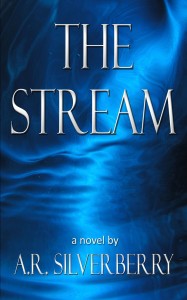Creativity: Supercharge Your Writing, Part I
Many years ago I had the good fortune to attend a number of workshops designed to increase creativity. My father taught two of them, and one was with Sidney Parnes, one of the founders of the Creative Problem Solving Institute in Buffalo New York. Through their influence and my own experience, I’m convinced that everyone can increase their creativity. Over the years, I’ve noticed a number of techniques that have been particularly useful for me as a writer.
Write Fast.
When I was in graduate school, I had a wise writing teacher who encouraged us to write as though Death were riding on our tails. To help us generate this feeling, he made us limit the amount of time we had to write. We just wrote full tilt, getting everything out, not worrying about good sentences or bad sentences. We could always go back afterwards and revise all we wanted. The limitation inherent in this approach paradoxically helps ideas flow, bypassing the left-brain and allowing the creative part of your brain to speak.
Brain Storm.
The brainstorming method is based on the idea that quantity yields quality. We often limit ourselves to the first few ideas that come to us, which are often clichés. As my watercolor teacher put it, you don’t find originality until you reach the twentieth idea. An overstatement—but there’s something to it. Here’s the method:
- Generate as many ideas as you can without judgment or deciding whether they will work. As soon as you apply criticism to ideas, it hinders the flow of them. Brainstorming is like turning on a spigot of hot water. If you apply judgment you mix in cold water and end up with something lukewarm. To release your creativity, ask your, “In what ways might I …” Notice that word “ways.” It asks your brain for lots of ideas, not one or two. Your brain will respond.
- One outcome of not judging is that a bad idea can often lead to a good idea. Maybe a variation of that bad idea is exactly what you’re looking for.
- Look at how you might change an element. For years we all ate chocolate chip cookies. Then someone had the brilliant idea of putting chunks in there, and a whole new product was born. In what ways might you apply making something bigger (chips into chunks) or smaller into a scene—a character, a sci-fi technology, etc?
Use Prompt Sheets to explore scenes, characters, and emotions
Over the years I’ve collected a nice set of prompt sheets. Before writing a scene, I fill these out. Generating a multitude of questions, they help me think about scene, character, setting, and plot from a lot of angles. By the time I’m done exploring, the scene is ripe and ready to write. Afterward, I rarely refer to the sheets. I don’t need to. It’s all inside and ready to come out.
Stock the pond.
Julia Cameron, in her fabulous book, The Artist’s Way, encourages artists to regularly go out on artist’s dates. This might be a hike, a trip to a museum, a concert, a play, a poetry reading. The point is that creativity doesn’t occur in a vacuum. We need input and stimulation. We need to see things from new perspectives. If we sit at home staring at our computers all day, we deny ourselves a mother lode of creative energy.
Read.
Read, read, read. Many writers even say to read bad writing. Personally, I find that has limited value. And my time is also limited. I say, read the best writing you can. See how other writers render a similar scene as one you’re working on. Look at the ways they artfully portray characters. This doesn’t even have to be a very conscious process though. You brain knows what you’re looking for. You’ll suddenly make parallels and connections, and solutions will come to you. Nothing is more exciting than finding just the right word you’ve been searching for.
Learn where you get your ideas.
I get my best ideas, and solutions I’m looking for, away from the computer. For me it’s usually while walking. For my wife, she’s often in the shower. For her, there’s something about water. Point is, start to notice where and when your ideas come. Build such activities and times into your day.
Keep a notepad on you.
Ideas can be ephemeral. If you don’t write them down, they can be gone within thirty to sixty seconds. That can be devastating when you finally nail just the right line of dialogue. I never go anywhere without a pen and a small notepad in my pocket. Sometimes I’ll stop every few minutes and frantically jot down a word, a phrase, or a sentence.
Keep a journal.
One of the most useful things I’ve done is keep a writing journal. Sometimes I write about my frustration with a particular chapter or character. Sometimes I write about things that are far more personal. Often I’ll brainstorm or work out what direction to take my WIP. Or I’ll pull away from the manuscript file I’m working on and write a scene in the journal. Because anything can go there, I’m free from restraint and let it all hang out. Some of the best writing I’ve done has started in my journal.
Dig deep within your own experience.
The most powerful writing is writing that rings true. If you delve deep into your own loves and hates, your triumphs and disappoints, and yes, your traumas, you will reveal truths about the human experience. When they pick up your work, readers long to resonate with that.
These are just a few of the many tools writers can use to increase creativity. Develop your own. Learn what works for you.
In the words of Jack London, “You can’t wait for inspiration. You have to go after it with a club.” Hopefully the above techniques will put that club in your hands.

WYNDANO’S CLOAK, by A. R. Silverberry

THE STREAM, by A. R. Silverberry

